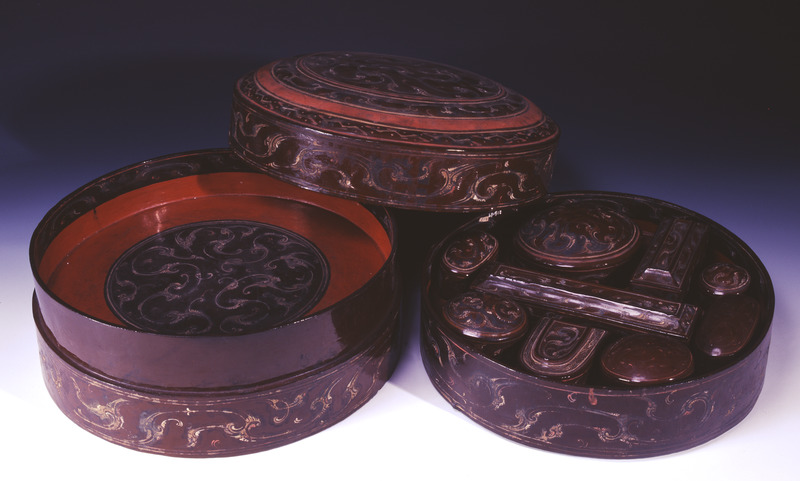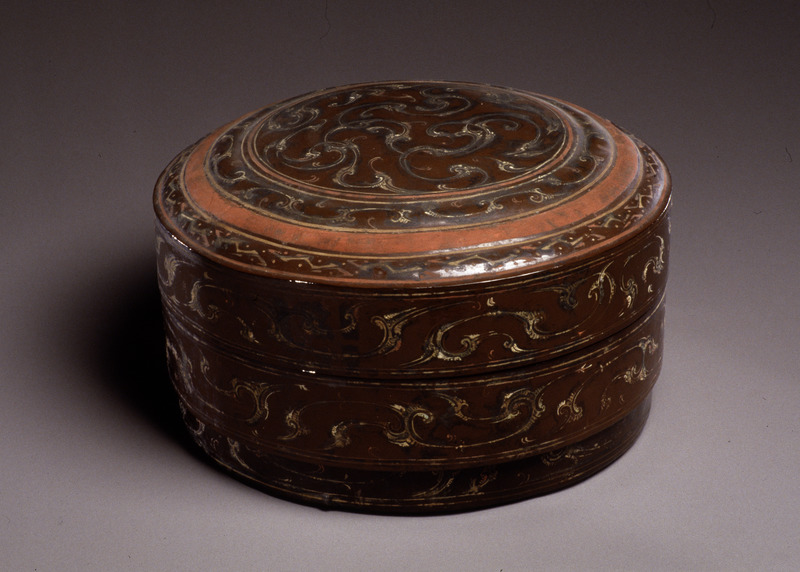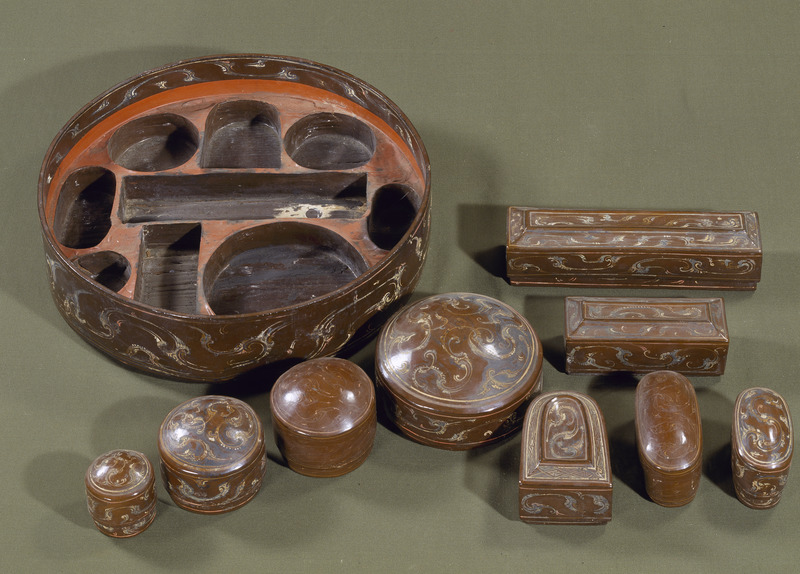Two-tiered Cosmetic Box Containing Nine Small Boxes

Both men and women in ancient China wore their hair long and possessed dressing articles. This two-tiered lacquer cosmetic box containing nine small boxes was buried in the north compartment of the tomb, wrapped in a thin silk embroidered with xinqi (migratory bird) design. The box is divided into three sections: two tiers and a lid. The lid and body of the box are made on a base of hemp cloth, and the two tiers are on a base hewn of wood. The outer surface of the box is coated with dark brown lacquer and then affixed with gold foils, upon which patterns are painted. The lid, the cover rim, the outer rims of the two tiers, the inner side of the mouth, and the centers of the inside of the lid and of the two sides of the central partition board are painted with cloud patterns in gold, white and vermilion. The rest of the box is coated with vermilion lacquer. Three pairs of mitts, one silk scarf, a belt, and one thin silk mirror case with “longevity embroidery” were placed on the upper layer of the box. Nine cavities are chiseled out of the bottom; placed in the cavities are nine small boxes containing cosmetics, rouge, silk powder pads, combs and a needle case. Xin Zhui, the noble wife of the prime minister, most likely used this cosmetic box to contain her dressing articles and other personal articles during her lifetime.

深入探索
About “Lacquer” and “Lacquers” Unearthed from Mawangdui

What is “lacquer”? The definition of the word “lacquer” (qi) appeared very early in China. The first dictionary, Explanations of Words (Shuowen Jiezi), compiled by Xu Shen of the Eastern Han Dynasty (25-220BC), defines the word as “Lacquer, a kind of tree sap that can coat objects and form shapes accordingly. Lacquer comes out of trees like water drops.” Lacquer forests are still widely distributed in China, mainly south of the belt from southern Gansu to Shandong. Natural lacquer must be treated before application. When applied to a wooden or bamboo base surface, lacquer becomes oxidized and turns into a thin coat, and the resulting utensils are commonly called “lacquer-ware”. Lacquer pieces are hard and durable, brilliant and beautifully colored when polished and resistant to decay when buried in soil or submerged in water.
The three Han tombs at Mawangdui yielded more than 700 lacquer piece. 184 pieces from Tomb No.1 and 319 from Tomb No.3 are mostly well preserved, showing brilliant, shiny colors. Of the nearly 200 lacquer pieces unearthed from Tomb No.2, only 52 can still be identified in terms of their original shape. These pieces are mainly utensils for practical use, covering almost all categories of lacquer-ware from ceremonial vessels, musical instruments, weapons, and burial objects to vessels for daily use. The new techniques employed in making these pieces include embossment, awl painting, inlay and hemp cloth base, and these represented the highest level of lacquer work techniques in the early Han Dynasty. When we study them, it is not difficult to see the development of lacquer work techniques that went along with that transitional historical period, and the process of development and change that they went through. This allows us to consider them as typical representatives for an objective evaluation and study of the development of lacquer work techniques of this period.



